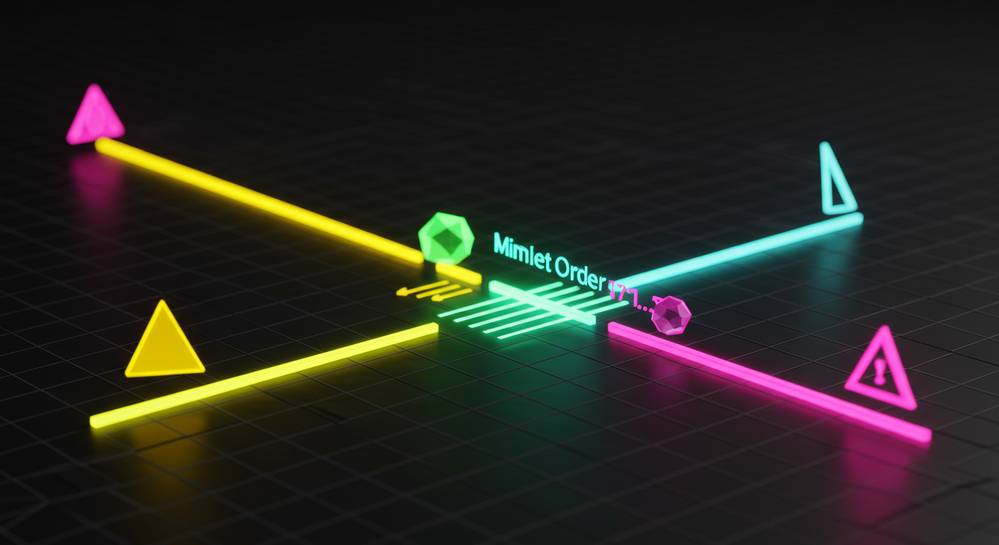Entering the world of digital trading can feel like learning a new language. With terms like bullish, slippage, and liquidity, it is easy to get overwhelmed. This guide breaks down the must-know market terms for digital traders into simple, clear explanations. Understanding this vocabulary is the first step toward building a confident and effective trading strategy in any digital market.
Understanding market sentiment and direction
Mastering must-know market terms for digital traders is your first step toward success. These concepts explain the core forces driving price action up or down. They empower you to interpret charts and news, making informed decisions instead of guessing. Understanding market trends is fundamental before executing any trade.
Grasping bull and bear markets
A bull market signals a sustained period of price growth, fueled by high investor confidence. Conversely, a bear market reflects falling prices and widespread pessimism. Recognizing the dominant trend is fundamental, as it dictates the most effective trading strategies for the current climate. Your approach in a bullish phase will differ greatly from a bearish one.
Key price levels: support and resistance
Support acts as a price floor where buying pressure typically stops a decline. Resistance is a ceiling where selling pressure often halts an advance. Identifying these critical levels is vital for setting entry and exit points. Many traders use key financial market analysis indicators to pinpoint these zones.
Navigating market volatility
Volatility measures how dramatically an asset’s price changes over time. High volatility offers greater profit potential from large price swings but also carries increased risk. Low volatility indicates stability. Gauging an asset’s volatility helps you manage risk effectively and choose assets that match your risk tolerance.
Key order types for trade execution

Once you have a view on the market, you must know how to act. An order is your instruction to an exchange to buy or sell a digital asset. Using the right order type is critical for managing your entry, exit, and overall risk. Understanding these must-know market terms for digital traders is essential for executing precise trades.
Market order versus limit order
A market order is an instruction to buy or sell immediately at the best available price. It guarantees execution but not the price, prioritizing speed. In contrast, a limit order allows you to set a specific price or better for your trade. It guarantees the price but not the execution, making it suitable for traders who value price control over immediacy.
Protective orders for risk management
These are automated orders designed to close a position and protect your capital. They are fundamental tools for disciplined trading and are crucial in volatile markets. Using them correctly is a core part of many undefined.
- Stop-loss: An order that sells an asset when it drops to a certain price. It is designed to limit your potential loss on a position.
- Take-profit: An order that closes your trade once it reaches a specific profit level. It ensures you secure gains before the market reverses.
Core concepts of price liquidity and slippage

The mechanics of trade execution are governed by liquidity and the spread. Understanding these concepts is essential for managing transaction costs and ensuring your orders are filled at expected prices. For all digital traders, these must-know market terms are non-negotiable for navigating fast-moving markets and protecting your capital from hidden costs.
Bid ask spread explained
The bid-ask spread is the difference between the highest price a buyer will pay (bid) and the lowest price a seller will accept (ask). This gap represents a direct transaction cost for traders. A tight spread signals high liquidity and lower trading costs, while a wide spread indicates the opposite, making it more expensive to enter and exit positions.
The role of market liquidity
Liquidity refers to how easily an asset can be bought or sold without significantly affecting its price. A highly liquid market has ample buyers and sellers, ensuring trades execute quickly with minimal price impact. In contrast, illiquid markets have fewer participants, making it harder to trade without causing undesirable price swings, which increases risk.
Understanding and managing slippage
Slippage occurs when your trade executes at a different price than you anticipated. This happens due to price changes in the milliseconds between placing and filling an order. It is most common in highly volatile or low-liquidity markets. You can manage this risk by using limit orders, which guarantee your price, instead of market orders.
Leverage margin and risk management terms

For traders looking to enhance their strategies, understanding leverage and margin is crucial. These tools amplify both gains and losses, demanding a solid risk management plan. They are must-know market terms for digital traders aiming to manage capital effectively and trade with greater precision.
The power and peril of leverage
Leverage lets you control a large position with a small amount of capital. For example, 10x leverage allows a $1,000 deposit to control a $10,000 trade. While this magnifies profits, it also magnifies losses just as quickly. It is a high-risk tool that requires disciplined use.
Margin and the risk of a margin call
Margin is the collateral needed to open and hold a leveraged trade. If the market moves against you, a broker issues a margin call, demanding more funds. Failing to add capital leads to the forced liquidation of your positions to cover any losses.
Defining your risk to reward ratio
This ratio compares a trade’s potential loss to its potential gain. A 1:3 ratio means risking one dollar for a potential three-dollar profit. A favorable ratio is a cornerstone of sustainable trading, helping ensure wins absorb losses over time.
Navigating the digital markets requires more than just capital; it demands a solid understanding of the language traders speak. Mastering these terms empowers you to make smarter decisions, manage risk effectively, and build a sustainable trading strategy. Continue your learning journey and explore more in-depth insights on Digital Economy Pulse to stay ahead in the dynamic world of digital finance.


